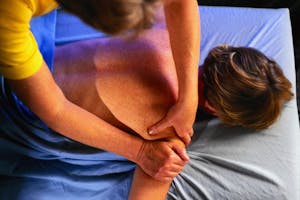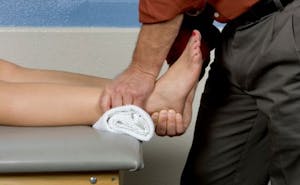
Hands-On Care That Gets Results
At Summit Physical Therapy, manual therapy is one of the many ways we help patients move better, feel better, and recover faster. Manual therapy refers to the skilled, hands-on techniques our clinicians use to reduce pain, improve joint mobility, and restore function. Manual therapy is most effective when paired with strategic exercises.
Whether you're recovering from injury, surgery, or dealing with stiffness, manual therapy can be a powerful tool in your rehab plan.
What Does Manual Therapy Include?
Joint Mobilization
Skilled and controlled movements of a joint or segment of the body to improve range of motion, reduce joint stiffness, and relieve discomfort.
Soft Tissue Mobilization
Targeted techniques to release tight muscles, reduce scar tissue, and improve circulation to promote healing.
Myofascial Release
A focused approach to releasing trigger points and muscle tension that limit movement or cause pain.
Instrument-Assisted Soft Tissue Mobilization (IASTM)
We use specialized tools to break up soft tissue restrictions, reduce adhesions, and restore mobility—especially helpful after surgery or chronic injury.
Therapeutic Cupping
Similar to IASTM, this hands-on technique is used to help reduce muscle or facial tension, improve circulation, and remodel scar tissue or fibrotic tissue. It involves placing specialized silicone or plastic cups on the skin to create suction, which lifts and mobilizes the involved tissue.
When is Manual Therapy Used?
Manual therapy is often included as part of a comprehensive, one-on-one treatment plan. It’s especially helpful for conditions such as:
- Frozen shoulder
- Shoulder impingement
- Hip impingement
- Tennis or golfer’s elbow
- Various tendonitis or fasciitis
- Post-surgical stiffness
- Joint restrictions
- Low back and neck pain
- Limited mobility and more
At Summit, we believe in personalized, hands-on care. If you’re looking for a rehab experience that puts you first and helps you get back to doing what you love, manual therapy may be a key part of your recovery.

